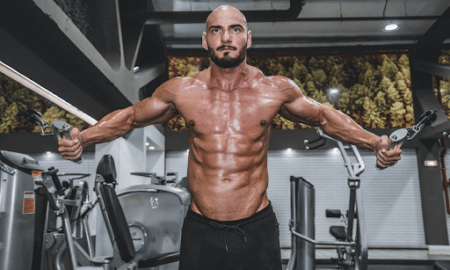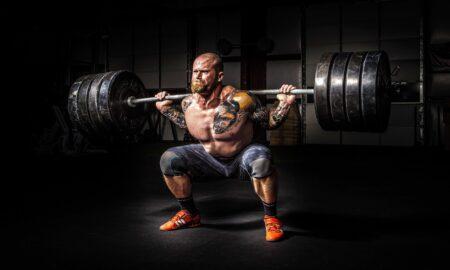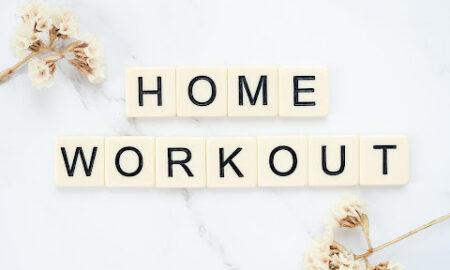Q: I bought your book and am reading it. Currently I’m in a big dilemma. First, I’m 23 years old, Chinese, at 141 pounds and 5’7”. I used to be 88 to 110 pounds. My bodyfat is 10 to 12 percent, so I’m able to see abs when standing up, and they’re very visible when flexed. I also do interval training—30-second sprint, 30-second jog—10 sets every day, six days a week on an empty stomach. I train three times a week at gym using full-body supersets. My flexibility is also in check, as I used to be a martial artist. In your book, I read that when bulking, do minimum or even no cardio. Given my current standard of cardiovascular fitness, do I have to give all of that up if I want to become huge? I’m in awe of such physiques, and, man, I want my own too! But I’m very confused—should I give up my functional fitness routine? My intake of calories per day is about 2,300 max.
A: To bulk up or not to bulk up? That is the question. I get it a lot from bodybuilders who are trying to get bigger but don’t want to become fat and sloppy. I understand their concerns because we start bodybuilding in order to improve the appearance of our bodies, not to look worse.
The concept of bulking up is to take in an excess number of calories to force your body to start gaining weight and add more muscle. The calorie surplus can also be converted to more energy during your workouts so you lift heavier weights, which translates into more muscle.
Obviously, bulking up isn’t for everyone. If you have a metabolism that adds fat very easily, you’d never want to eat an excessive number of calories because it would just add too much fat to your body.
Some people, however, have a hard time adding even one pound of bodyweight, no matter how much food they eat. They couldn’t get fat even if they tried. It doesn’t matter how much food they eat, even junk food: They can’t gain any muscle or fat on their bodies.
For people who have a hyperfast metabolism, bulking up is ideal for adding size and putting on muscular bodyweight. If those hardgainers try to get bigger by eating a standard bodybuilding diet or, worse yet, eating less food in order to stay lean all the time, they’ll never get bigger or add any appreciable mass.
Having abs and being lean are in fashion right now. If, however, you have a very fast metabolism and want to get bigger, the only way you’re going to do that is to eat enough calories to feed both your racing metabolism and your muscles—and you can’t do that by eating lean and maintaining ripped abs.
I think it’s great that you’re doing so much functional fitness and that you enjoy it. I’d never tell you to stop doing something that’s so great for your cardiovascular system, especially if you love doing it. I think, though, you can make some changes to your training program that will give you more mass.
The interval cardio that you’re using is great for burning bodyfat and jacking up your metabolism. Because it’s more high-intensity than regular, steady-state cardio, it also has the potential to eat up muscle tissue if practiced too often or for too long.
I suggest cutting interval cardio back to only three days a week instead of six. That will let your body recuperate more and not burn so many calories. You also mentioned that you perform the cardio on an empty stomach in the morning. High-intensity interval cardio is much different from steady-state cardio because it’s more stressful. For that reason you want to have some nutrients in your system before you start. Doing HIIT on an empty stomach can be muscle-building suicide.
If you do the interval training in the morning, eat a small meal consisting of a protein and carbohydrate source about an hour in advance. You could have a quick-acting protein supplement like Optimum Nutrition’s Hydro Whey protein along with a half cup of oatmeal or a slice of Ezekiel bread. The amino acids and carbs in that meal will give you more energy—plus nutrients that will help protect your muscles from catabolism.
You also mentioned that your weight-training program consists of “full-body supersets.” A superset is usually two exercises performed consecutively with no rest between. I’m not sure what a full-body superset is, but if it involves doing even more exercises together into a giant set, that’s going to limit the amount of weight you can use.
Change your training so that you’re using heavier weights and taking more rest between sets. The longer rest periods will enable you to use more resistance, which will build more muscle. The best rep range for building size is six to eight. You want to give maximum effort to each set, and the only way to do that is to be fully rested before each set.
Concentrate on using the basic, compound movements that involve several muscle groups. That way you’ll be able to use the heaviest weights. When you start getting stronger on those key exercises and begin using more resistance at six to eight reps, you’ll really start seeing changes in muscle size.
You can continue training three days a week, which will help you recuperate and not overtrain. Work each muscle group once a week by splitting the body over three days. One split that I recommend is training chest, arms and calves on day one, legs and abs on day two and shoulders and back on day three.
The other crucial component to getting bigger is your diet. You said you’re taking in 2,300 calories right now. If you’re not getting bigger with that many calories, then you need to eat more.
I like breaking it into the three major macronutrients. Protein is the first important macronutrient because it repairs and rebuilds muscle tissue. That’s obviously important for building muscle. At 141 pounds you should get at least 175 grams of protein. That’s 1.25 grams of protein for each pound of bodyweight.
You also need to eat plenty of complex carbohydrates to supply the energy you need for your workouts and help build more mass. The glycogen supplied by complex carbs will be stored in your muscle tissues, providing more fullness to the cells. The carbs are also invaluable when it comes to tissue repair and recovery. I recommend eating about 280 to 300 grams of carbs every day so you can begin adding some muscle.
Don’t forget to include healthful fats like those found in flaxseed oil and salmon. Omega-3 fatty acids are great for your cardiovascular health and also help make the muscle cells more sensitive to amino acids and sugar. Fats have nine calories per gram, and that will give you more calories to help you gain muscular weight.
If you make those changes to your cardio, weight training and diet, you can start adding more mass without getting too fat. You’ll have to cut back on some activity while modifying your diet and weight training, but I think you can include your functional fitness in your overall program and still add the muscle you want.
Editor’s note: John Hansen has won the Mr. Natural Olympia and is a two-time Natural Mr. Universe winner. Check out his Web site at www.NaturalOlympia.com for more information about how you can be a part of his exciting, new Natural Olympia Fitness getaway. Send questions or comments to [email protected]. Look for John’s DVD, “Natural Bodybuilding Seminar and Competitions,” along with his book, Natural Bodybuilding, and his training DVD, “Real Muscle,” at his Web site or at Home Gym Warehouse, www.Home-Gym.com. IM




















You must be logged in to post a comment Login